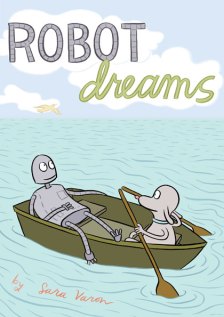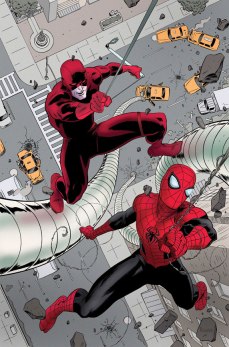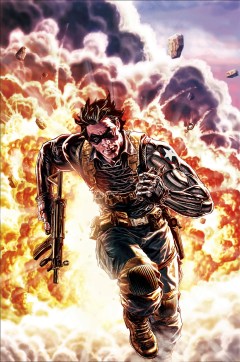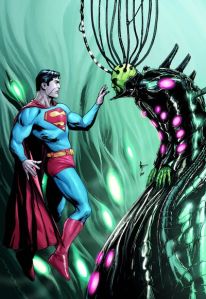We all knew this day was coming. Geoff Johns can’t write Green Lantern forever, though he probably would if he could. One day Johns was going to move on to new things and leave Green Lantern to finally sink or swim without its long time master. He’s been writing about Hal Jordan and the intergalactic police department for nine years now and in that time so many new ideas have been introduced and old concepts have been revamped.
 Johns introduced the emotional spectrum, the Black Lantern Corps, made the Guardians into villains, and unearthed secret after secret of hidden Green Lantern Corps past. We can only imagine at this point what is ahead for Hal Jordan, Kyle Rayner, Guy Gardner, John Stewart and maybe even Simon Baz. But what will happen to Johns’ many creations and even the characters he saved from oblivion? I imagine the characters in other Green Lantern titles will continue unscathed. Atrocitus will continue to appear in Red Lanterns, Saint Walker will play an important role in Green Lantern: New Guardians, Larfleeze will be hanging out in Threshold. These ideas have long since taken on a life of their own beyond their creator. Geoff Johns or not, these stories can only continue to go in new directions and even higher heights.
Johns introduced the emotional spectrum, the Black Lantern Corps, made the Guardians into villains, and unearthed secret after secret of hidden Green Lantern Corps past. We can only imagine at this point what is ahead for Hal Jordan, Kyle Rayner, Guy Gardner, John Stewart and maybe even Simon Baz. But what will happen to Johns’ many creations and even the characters he saved from oblivion? I imagine the characters in other Green Lantern titles will continue unscathed. Atrocitus will continue to appear in Red Lanterns, Saint Walker will play an important role in Green Lantern: New Guardians, Larfleeze will be hanging out in Threshold. These ideas have long since taken on a life of their own beyond their creator. Geoff Johns or not, these stories can only continue to go in new directions and even higher heights.
Green Lantern was a dead brand before Johns came along. Hal Jordan had long since gone crazy and destroy the Green Lantern Corps and now Kyle Rayner was all that was left. Rayner kept the light burning for years, both in story and property, but only Hal Jordan’s return could usher in the sweeping changes that needed to take place. It was not always the best writing, but it was exactly what the brand needed. Now the line is a juggernaut with infinite possibilities and we need to thank Geoff Johns for that.

 Robot Dreams, by Sara Varon, is a silent comic book about a dog who builds his own robot friend. The two become
Robot Dreams, by Sara Varon, is a silent comic book about a dog who builds his own robot friend. The two become  shouldn’t even have to say this, but if you don’t already read Daredevil, you need to start right now. You can find people saying the exact same thing
shouldn’t even have to say this, but if you don’t already read Daredevil, you need to start right now. You can find people saying the exact same thing 
 Glory was ‘created’ by Rob Liefeld in the early 1990s. I say ‘created’ because apparently Rob Liefeld’s idea of creating something is just to take an already existing character and change the color schemes a bit. Glory was clearly
Glory was ‘created’ by Rob Liefeld in the early 1990s. I say ‘created’ because apparently Rob Liefeld’s idea of creating something is just to take an already existing character and change the color schemes a bit. Glory was clearly 

 People die. It happens. But why can legacies only be passed along after death? The old hero dies and a new one rises to take their place. It happens all the time, but what’s wrong with doing it a little differently? Why can’t the old hero just move on? Super-heroics is a dangerous business and people will ultimately die, but is it impossible to simply retire, to live? How does killing the hero do anything but hurt the franchise?
People die. It happens. But why can legacies only be passed along after death? The old hero dies and a new one rises to take their place. It happens all the time, but what’s wrong with doing it a little differently? Why can’t the old hero just move on? Super-heroics is a dangerous business and people will ultimately die, but is it impossible to simply retire, to live? How does killing the hero do anything but hurt the franchise? of a superhero and the origin story of another. From the time I discovered the ending of this story in the
of a superhero and the origin story of another. From the time I discovered the ending of this story in the  first two Christopher Reeve movies. At various times in my life, I’ve tested the Superman waters again, both on paper and film, and have been disappointed. My problem has generally been that you can’t relate to him. He’s perfect, really. If you’re a human villain trying to defeat Superman, you have to either find some kryptonite or become a magician (or realtor, apparently.) Otherwise, you have to be a super powerful alien or an alien robot. When someone pulls a gun on Superman, we yawn. Also, my impression of Clark Kent was that he’s a bit of a wiener. That’s mostly an act, because Superman (Kal-El) is quite confident and fearless. But the fact that either we see Clark as a fuddy-duddy weakling or Superman as an all-powerful half-god exemplar of interstellar perfection, there’s not much to relate to. Also, his method of hiding the fact that he’s Superman (thick-rimmed glasses) is stupid. The explanation I once received that he actually hides his identity by some kind of mind control (on everybody!?) is stupider.
first two Christopher Reeve movies. At various times in my life, I’ve tested the Superman waters again, both on paper and film, and have been disappointed. My problem has generally been that you can’t relate to him. He’s perfect, really. If you’re a human villain trying to defeat Superman, you have to either find some kryptonite or become a magician (or realtor, apparently.) Otherwise, you have to be a super powerful alien or an alien robot. When someone pulls a gun on Superman, we yawn. Also, my impression of Clark Kent was that he’s a bit of a wiener. That’s mostly an act, because Superman (Kal-El) is quite confident and fearless. But the fact that either we see Clark as a fuddy-duddy weakling or Superman as an all-powerful half-god exemplar of interstellar perfection, there’s not much to relate to. Also, his method of hiding the fact that he’s Superman (thick-rimmed glasses) is stupid. The explanation I once received that he actually hides his identity by some kind of mind control (on everybody!?) is stupider.